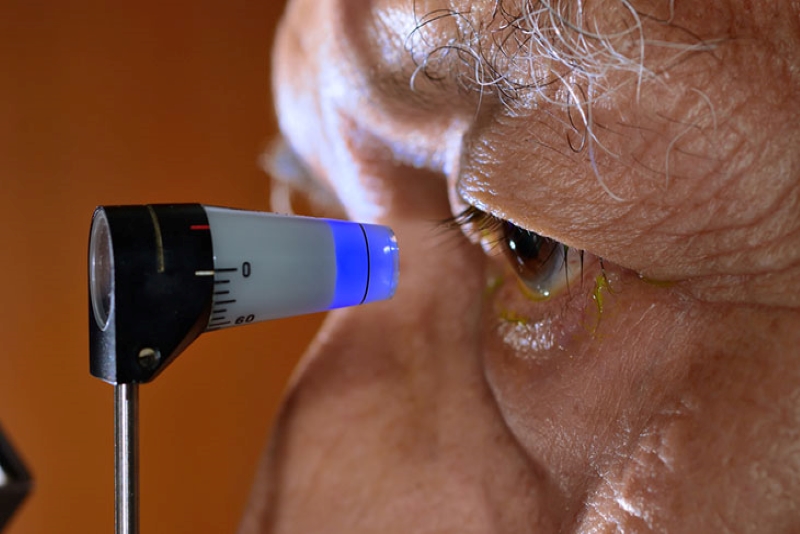
What is ocular tonometry and when should it be done?
Let’s find out what ocular tonometry is, a diagnostic technique used to measure internal eye pressure, why it is important to monitor eye tone, when values can be said to be normal and when they indicate borderline pressure
Ocular tonometry: what it is
Ocular tonometry is a non-invasive, non-painful test, performed during routine eye examinations, to assess the inner eye pressure or ocular tone.
Intraocular pressure is measured in millimetres of mercury (mmHg) and can be influenced by corneal thickness: a thin cornea reports lower values and a thick cornea higher values.
Cortisone therapy, trauma or ophthalmic surgery can also change the ocular tone.
Values that are too high can cause irreversible damage to the optic nerve: in these cases, diagnostic testing is therefore essential.
Monitoring eye pressure is also very important for the diagnosis of possible diseases such as glaucoma.
When is ocular tonometry done
This test is accessible to everyone, including children and pregnant women.
It is particularly indicated for people suffering from glaucoma, as the eye pressure need not exceed a threshold value of 21 mmHg.
The tonometer: types and operation
There are various instruments for measuring intraocular pressure, the most widely used of which are:
- The puff tonometer: puff tonometry involves no contact, the instrument is brought close to the patient’s eye and, once the aim is in focus, a puff of air is produced that reaches the cornea and is picked up by a photocell. This procedure takes a few seconds, about 15 per eye.
- The Goldmann applanation tonometer: Goldmann applanation tonometry requires contact (albeit a very slight force). Before starting the test, anaesthetic is applied to avoid discomfort to the patient during the measurement. The cone is then brought close to the eye until it makes contact: the pressure is calculated through the resistance of the eye to the instrument. This procedure also takes a few seconds, about 20 in total.
Goldmann applanation tonometry is considered the gold standard internationally; however, it has been questioned because a correlation between intraocular pressure and central corneal thickness has been demonstrated.
A thin cornea exposes one to an underestimation of pressure, while a thick cornea to an overestimation of results.
With the blow tonometer, on the other hand, the patient’s corneal thickness is also taken into account: this allows the pressure value to be corrected according to the actual eye data and the results to be more accurate.
What are normal tonometry values and what to do when they are borderline
Normal intraocular pressure values are between 10 and 21 mmHg (millimetres of mercury).
For patients with borderline pressure values, a tonometry curve is recommended, i.e. a diagnostic test that consists of measuring the eye tone throughout the day to monitor its progress.
In glaucoma patients or patients with borderline pressure, the tonometric curve makes it possible to tell whether the pressure remains within normal limits throughout the day. Usually at least 3 measurements are taken:
- the first around 9.00 a.m;
- the second at 12 noon;
- the last in the afternoon.
Read Also
Emergency Live Even More…Live: Download The New Free App Of Your Newspaper For IOS And Android
Glaucoma: What Is True And What Is False?
Eye Health: Prevent Conjunctivitis, Blepharitis, Chalazions And Allergies With Eye Wipes
Dry Eye Syndrome: How To Protect Your Eyes From PC Exposure
Autoimmune Diseases: The Sand In The Eyes Of Sjögren’s Syndrome
Dry Eye Syndrome: Symptoms, Causes And Remedies
How To Prevent Dry Eyes During Winter: Tips
Blepharitis: The Inflammation Of The Eyelids
Blepharitis: What Is It And What Are The Most Common Symptoms?
Stye, An Eye Inflammation That Affects Young And Old Alike
Blurred Vision, Distorted Images And Sensitivity To Light: It Could Be Keratoconus
Stye Or Chalazion? The Differences Between These Two Eye Diseases
Blepharoptosis: Getting To Know Eyelid Drooping
Lazy Eye: How To Recognise And Treat Amblyopia?
Corneal Keratoconus, Corneal Cross-Linking UVA Treatment
Keratoconus: The Degenerative And Evolutionary Disease Of The Cornea
Burning Eyes: Symptoms, Causes And Remedies
What Is The Endothelial Count?
Ophthalmology: Causes, Symptoms And Treatment Of Astigmatism
Asthenopia, Causes And Remedies For Eye Fatigue
Blepharitis: What Is It And What Does Chronic Inflammation Of The Eyelid Entail?
Inflammations Of The Eye: Uveitis
Myopia: What It Is And How To Treat It
Presbyopia: What Are The Symptoms And How To Correct It
Nearsightedness: What It Myopia And How To Correct It
Blepharoptosis: Getting To Know Eyelid Drooping
Lazy Eye: How To Recognise And Treat Amblyopia?
What Is Presbyopia And When Does It Occur?
Presbyopia: An Age-Related Visual Disorder
Blepharoptosis: Getting To Know Eyelid Drooping
Rare Diseases: Von Hippel-Lindau Syndrome
Rare Diseases: Septo-Optic Dysplasia
Diseases Of The Cornea: Keratitis
Dry Eyes In Winter: What Causes Dry Eye In This Season?
Why Do Women Suffer From Dry Eye More Than Men?
Keratoconjunctivitis: Symptoms, Diagnosis And Treatment Of This Inflammation Of The Eye


